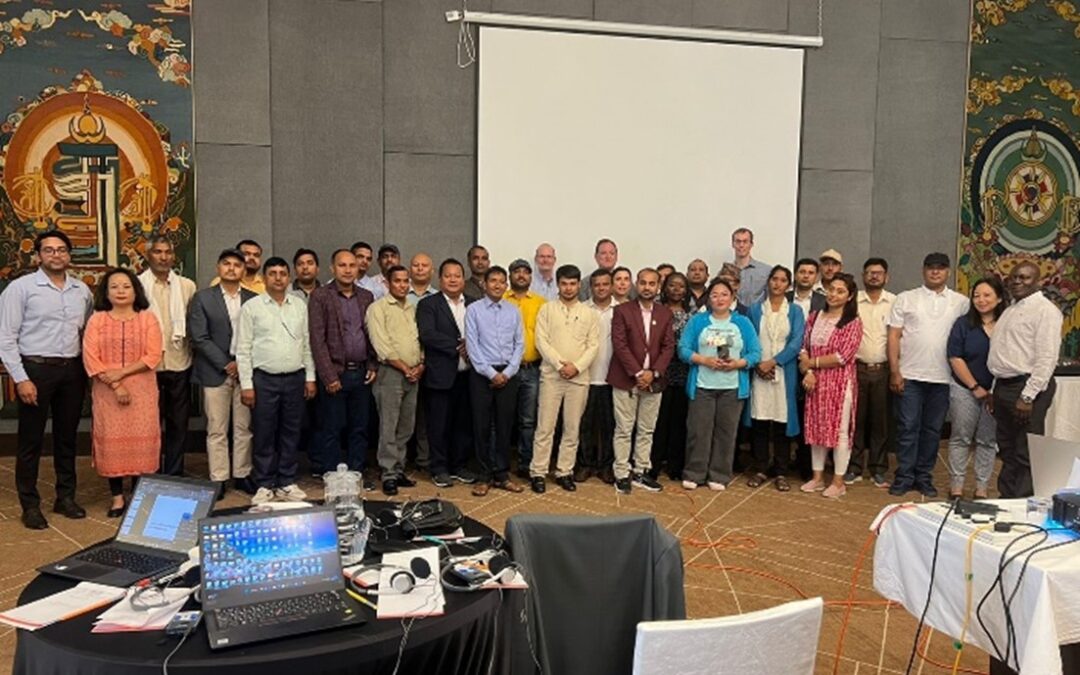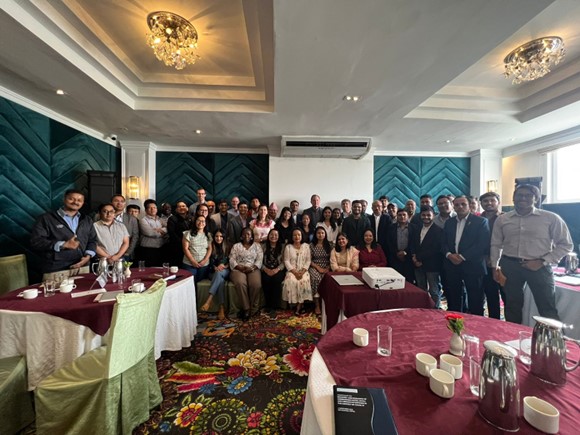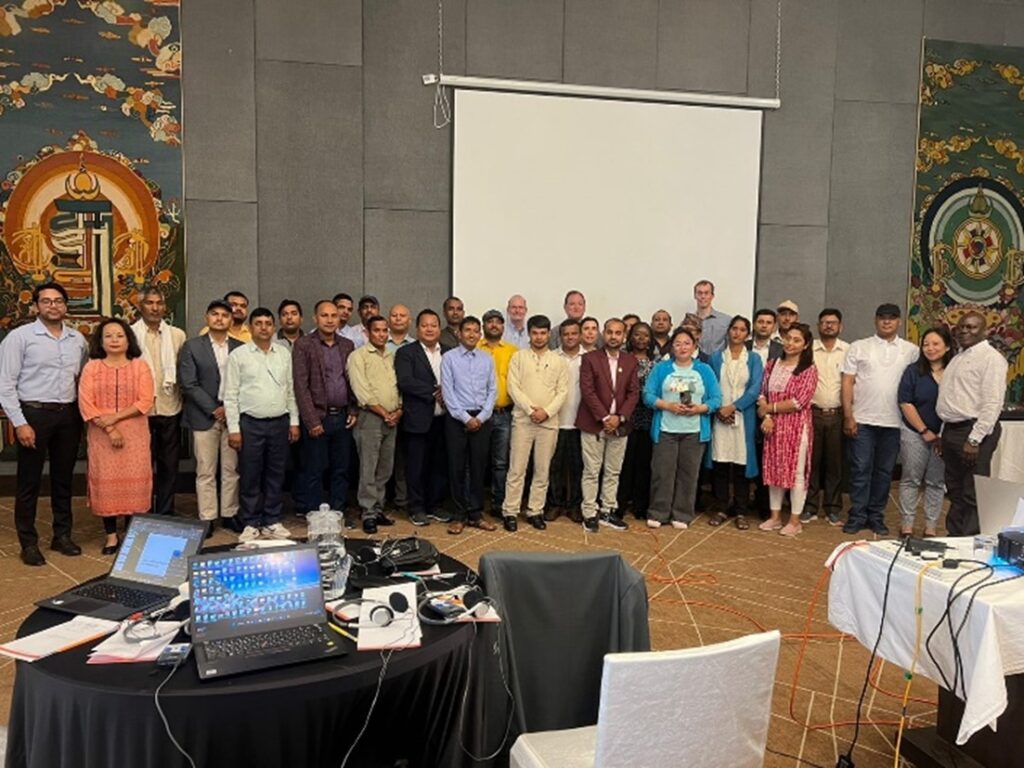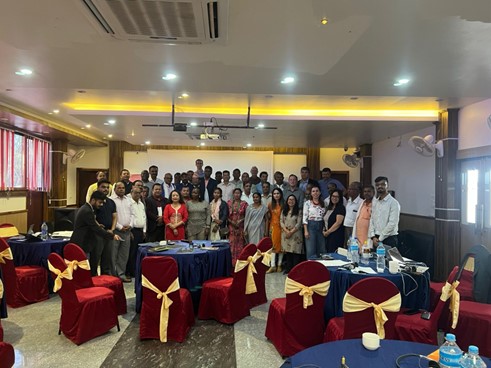by: Radegunda Kessy, Eliud Birachi, Jean Claude Rubyogo
Lentil (Lens culinaris) also called dal is a leading legume in Nepal as staple for food and incomes through local trade and export. It is grown in the cool/winter season and accounts for 63% of total pulse area (0.32 million ha) and 67% of total pulse production (0.4 million MT) in Nepal. Lentil ranks fourth place in terms of area and production after rice, maize, and wheat. Dal is commonly accompanied as a meal with rice or rotis (round flatbread commonly consumed in many countries of Southeast Asia). Lentils play an important role in livelihood, food, and nutritional security to most Nepalese. They are low in fat, sodium, cholesterol free, high in protein, and are an excellent source of both soluble and insoluble fiber, complex carbohydrates, vitamins, and minerals. Lentil also contributes to soil health due to its ability to fix nitrogen.
Despite the importance of the pulse in Nepal, significant challenges affect its production and trade. For example, though demand for lentil has expanded by 6%, production has been declining since 2012. For example, the amount of lentil exported from Nepal decreased from 15,747.3 tons in 2018/19 to 4,422.5 tons in 2021/22. Information from Nepal Agriculture research organization shows that import of lentil raised from 45,574.54tons in 2018/19 to 79,404.47 tons in 2021/22. Consumers prefer Nepal lentils because it is palatable and high in nutrients content. Low production is attributed to climate variability and use of poor seeds, less market demanded varieties and quality issues among other factors. In addition, Nepal lentil compete with imports as large processors prefer imported lentil due to lower prices, better quality, uniformity, and large grain size which make it easier to process compared to local lentils.
Declining production: “Farmers are abandoning lentils for vegetables, wheat and rice production which fetches better price in the market.” [Darai Rajendra (NARC)]].
Declining local prices: “There is higher variation on grain price of locally produced lentils. For example, places close to the Indian border fetches low price compared to distance areas” [Sagar Chaudhary -representative of private sector in Madhesh province].
Declining yields: “Crop yields have become stagnant with low productivity attributed mainly by natural calamity and poor agronomic practices” [Tika Ram Thapa from Sudurpachim province].
To address these challenges, collaborations between Nepal government, the Innovation Lab for Legume Systems Research under Michigan State University, and the Pan-Africa Bean Research Alliance (PABRA) through support by USAID’s Feed the Future program, are evaluating the potential of Multistakeholder platforms (MSPs) as a mechanism to boost lentil sub-sector. Using lessons from PABRA’s bean value chain in Africa, PABRA is providing technical assistance to the Nepal program to help set up the multistakeholder programs in three provinces in Nepal.
The three provinces, Sudurpaschim, Lumbini and Madhesh are major production hubs of lentils in the country. In the provincial meetings, stakeholders were able to reflect on the constraints faced in the value chain and come up with priority solutions that could address the challenges. In the final meeting which brought together federal and provincial government representatives in Kathmandu, the USAID mission officials, major lentil off takers and service providers among other stakeholders were informed of the provincial MSP road maps that were generated. The roadmaps, guided by an interim steering committee for each province, will lead in the establishment of the MSPs within three (3) months. Some of the specific issues emerging from the scoping visit include refocusing on market demanded lentil varieties, addressing seed supplies and better coordination of the lentil value chain as well as understanding market constraints among them quality assurance, good agricultural practices to enhance production.
Import substitution: “Local Lentils compete with imports as large legume processors prefer imported lentil due to low cost and grain uniformity” Shiva Sundar Gupta from Lumbini province.
Forex earnings: “Lentils occupy 60% of the total grain legume area and production in Nepal, making the country the sixth largest producer and fifth largest exporter of lentils” Nabaraj Joshi-representative from private sector in Sudurpaschim.
Incomes: “Demand for lentil has expanded by 6% over the past ten years, indicating that revenues from lentil trade is also increasing.” Roshan Kumar Mehta -representative of Ministry of Agriculture and Land management.
Food and nutrition security: Lentil is an important crop in Nepal for both staple and nutrition, soil health, and export. Nepal can take advantage of released biofortified lentil varieties.” Darai Rajendra (NARC)
Inclusion of missing stakeholders that are necessary for the successful operation of the MSP, including gender dimensions were some of the activities that form the actions to take before the MSPs are established. There are previous efforts to establish and strengthen working groups across the country and provinces to address agricultural challenges, however, none of these was focused on lentils, and lacked key stakeholder participation for sustainability. These gaps will be addressed in the current efforts.
Way Forward: “Strong and interest from stakeholders to work together to address existing challenges and first ten the changes” Rajendra Prasad – secretary of cooperatives in Lumbini province].
PABRA has been promoting Multistakeholder platforms in Malawi under the Malawi transforming seed systems through Multistakeholder platform project funded by USAID through the Legumes Systems Innovation Lab. The project has demonstrated that demand pull from the grain markets is at the center to drive demand and supply and hasten uptake of new market demanded varieties. PABRA has also established bean multistakeholder platforms in other countries such as Tanzania, Rwanda, Ethiopia among others (Making the Bean Corridor work: Lessons from Tanzania | PABRA (pabra-africa.org; Making the Bean Corridor work: Lessons from Zambia | PABRA (pabra-africa.org). How Can Multi-Stakeholder Platforms Drive Bean Seed Systems to Respond to Market Demand? | PABRA (pabra-africa.org).
In Ethiopia, for example, using the market driven multistakeholder platforms raised bean exports from US$ 8 million to US$ 160 million in less than 15 years. The platforms are mainly driven by the private sector off takers while the government supports policies that structure trade. These lessons and experiences will be deployed to support the anticipated multistakeholder lentil platforms in Nepal by PABRA.
It is anticipated that upon establishment, the multistakeholder platform will channel consumer and market preferences in lentil varieties to producers, to seed systems and varietal development efforts. These will translate to increased productivity and production, enhanced access to seed and improved varieties which are market demanded and enhanced lentil value chain coordination. Consequently, imports will reduce, exports will rise, and farmers will have food, nutrition security and income from lentil production.




